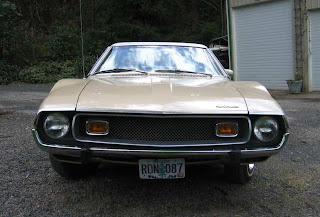They were born amid the railroad crisis that came to light with the Penn Central bankruptcy of 1968. A ward of the government, they were generally regarded with disdain by the freight railroads that hosted their trains and by the government itself, as they came hat in hand every year, asking for enough money to live another year.
Amtrak has a split personality. There are the fast, efficient trains of the Northeast Corridor. Amtrak owns the railroad there, the track itself. Half of Amtrak's revenue and passengers are generated there. The name of the game is fast, frequent service. Say "Metroliner" or "Acela" anywhere in the Northeast and people know what you're talking about. The actual "running the trains" part of the business turns a modest profit.
 |
| The 20 Acela train sets earn 25% of Amtrak's revenue |
| Amtrak in 1971 |
| Amtrak today |
Most take a day or two to get where they are going.
 |
| Modern-day Crescent stops at Gainesville, GA, midway on it's 30 hour journey from New Orleans to New York City |
 |
| California Zephyr negotiates one of many scenic canyons in Colorado on it's two day trip from Chicago to San Francisco. |
 |
| Once the premier way for businessmen to get from NY to Chicago, the Broadway Limited snakes it's way through Pennsylvania in the early 1990s. |
 |
| Old locomotives and old coaches kept things going on the Hudson River valley in the early 1970s |
So, the government formed Amtrak on May 1, 1971 and the railroads were relieved of running passenger trains. The remaining network was paired down to a cohesive, interconnected network, organized and operated by Amtrak. The railroads were now merely hosts to the trains and were paid for the cost of running them over their lines. They were still a nuisance to them to have around, but at least they weren't a financial drain.
 |
| The National Limited on it's way from Kansas City to New York City snakes it's way around a Conrail freight train. |
Regional politics took hold and nothing much changed. Amtrak's routes have changed very little since it's creation and Amtrak has launched only a few new corridor services, mostly with the financial support of a few states like Maine, North Carolina and California. Amtrak, as a whole loses quite a bit of money per passenger. Those long distance trains with their sleeping cars and dining cars take in only about 50 cents for every dollar it cost to operate them.
 |
| In it's heyday, the Super Chief escorted movie stars to LA. Here is remnant of this once-great train, the Southwest Limited, gliding east through Illinois. |
Despite all this, Amtrak still has some pride. Their shortcomings notwithstanding, they have accomplished things. They replaced the entire rag-tag fleet of passengers cars they inherited at the start with four standard kinds. They replace their entire locomotive fleet twice, each generation being a cut above the old. They've made improvements to the Northeast Corridor in two great steps, each time raising trains speeds and reducing trip times. They took the successful Penn Central Metroliner and made it a household name. They replace that with 150 mph Acela, the fastest train in the Western hemisphere. They have partnered with states and are now starting to fulfill their initial promise of fast, frequent service on new corridors.
| North Carolina's growing Charlotte to Raleigh Corridor |
 |
| Amtrak 156 at NC Transportation Museum on 7/3/2012 |
The other day, one of these commemorative locomotives was leading Amtrak's Crescent north out of Atlanta. I met it at Buford Georgia. It was the original paint scheme from the days when Amtrak was new and there was hope for fast, frequent service in regions around the country. It was bittersweet watching it go by. It's a nice train. The equipment is in good condition and service is pretty good. It even runs close to on time most days. But, by now, Atlanta should have been a hub connecting cities around the southeast with fast, frequent service. Instead, it's just the Crescent, on it's ancient route - two locomotives, a baggage car, four 60 seat coaches, a lounge car, a dining car and two 30 bed sleeping cars - making it's slow and steady, daily trek from New Orleans to New York City.
So, here's to Amtrak, frozen in childhood, stuck between the slow and steady and fast and frequent. Hanging on despite the odds. Not quite fully alive, but not dead yet, either.
The Crescent rolls through the Georgia night....

















































